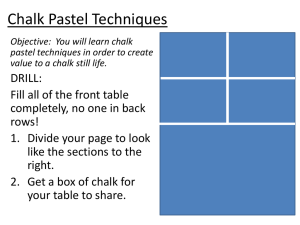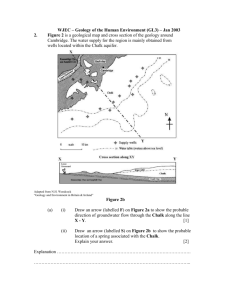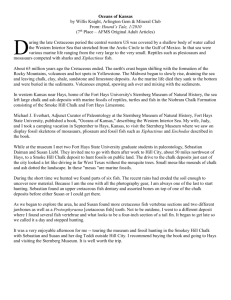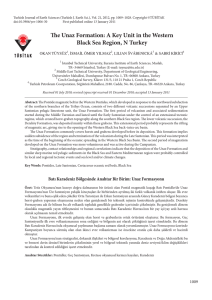Slide 1
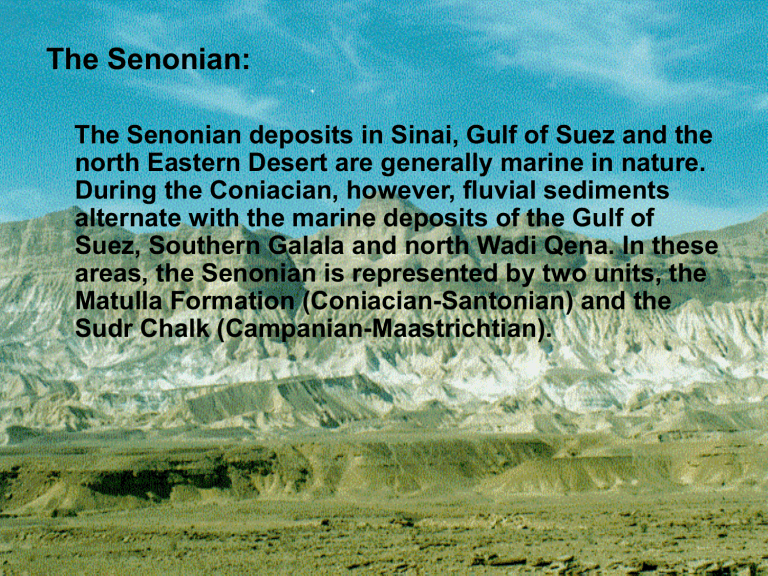
The Senonian:
The Senonian deposits in Sinai, Gulf of Suez and the north Eastern Desert are generally marine in nature.
During the Coniacian, however, fluvial sediments alternate with the marine deposits of the Gulf of
Suez, Southern Galala and north Wadi Qena. In these areas, the Senonian is represented by two units, the
Matulla Formation (Coniacian-Santonian) and the
Sudr Chalk (Campanian-Maastrichtian).
The relatively soft deposits of the
Matulla
Formation
of GHORAB (1961) are conformably underlain by the hard fossiliferous dolostones and limestones of the Wata Formation and are overlain by hard brown chert bands and white chalky limestones of the Sudr Chalk.
In its type locality to the east of Abu Zeneima, the
Matulla Formation attains 170 m in thickness and is made up of three units: a sandstone dominated unit at the base, glauconitic shale and dolostone succession in the middle and a sandy dolostone and marl sequence at the top.
The Sudr Chalk
is a widely distributed rock unit in eastern Egypt. It is characterized by its white colour between the greyish green shales and marls of the
Esna Shale above and the yellow sandstones and dolostones of the Matulla Formation below.
The greatest recorded thickness is at El-Markha Plain along the eastern coast of the Gulf of Suez (220 m) where it can be subdivided into its two members suggested by GHORAB (1961).
The lower
Markha Chalk Member
is composed of snow white partly silicified chalk intercalated by grey and brown chert concretions and bands with some dolostone and argillaceous limestone streaks.
The upper
Abu Zenima Chalk Member
consists of grey, argillaceous and thin bedded soft limestones.
The basal beds of the Markha Chalk Member are highly fossiliferous with Pycnodonta (Phygraea)
vesicularis (LAMARCK) which indicates a
Campanian age for that member (KORA & GENEDI
1995).
In the north Western Desert, the Chalk deposits are termed
the Khoman Chalk
which reflects a widespread transgression and deepening of the seas over Egypt.
Complete sections of the Khoman are found in many of the basinal areas (Abu Gharadig, Um Barka) where sedimentation was continuous, from the
Turonian to the Senonian. In these areas, the
Khoman is divided into a lower "B" member and an upper "A" member.
In southern Egypt (Stable Shelf area), the Taref
Sandstone is capped unconformably by marine variegated shales, named Mut in the Dakhla Basin and
Qusier Variegated Shale
in the Qusier-
Safaga district.
These vividly coloured shales are believed to have been deposited in supratidal to intertidal flats which were transgressed at times by marine incursions of short duration (KERDANY & CHERIF 1990).
In the belt which extends from Dakhla Oasis in the west
(Abu Tartur Plateau) to Qusier in the east, the phosphate beds are well developed and assume economic importance.
They are named
Duwi (Phoshate) or Formation
.
To the south of this belt, the phosphate beds do not form an important element in the formation and become indistinguishable from the overlying
Dakhla Shale
.
Economic aspects of the Cretaceous deposits:
- The Cretaceous sediments are important source and reservoir rocks for oil and gas in the Gulf of Suez and the north Western
Desert petroliferous provinces.
- The Cretaceous clastics produced huge quantities of kaolinitic clays used for ceramic, white cement, rubber, paper industries,
..etc..
- The Cretaceous phosphates are produced from the Duwi
Formation in the Nile Valley, Abu Tartur Plateau and in the
Qusier-Safaga district.
- Aswan oolitic iron ores were once exploited from the Cretaceous clastics NE of Aswan.
-Cretaceous carbonates (chalks, limestones and dolostones) are quarried and used in several industries. They are used as buildingstones and are also crushed and used as a sub-base in asphaltic roads.
